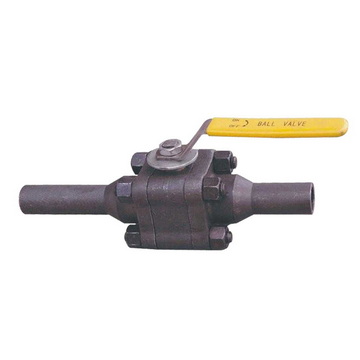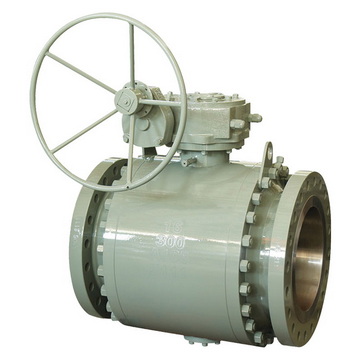How to Identify a High-Quality Manual Ball Valve Supplier
Content Menu
● Core Competencies to Look For
>> Product Design and Engineering
>> Materials and Certifications
>> Testing and Quality Assurance
>> OEM/ODM Fit
>> Application Knowledge and Support
● How to Assess a Supplier's Documentation
>> Quality Systems and Process Controls
>> Compliance and Traceability
● Visual Evidence: Why Images and Videos Matter
● The OEM Advantage with a China-Based Manufacturer
● Selection Checklist for Buyers
● Case for Partnership: What a High-Quality Manual Ball Valve Supplier Delivers
● Conclusion and Call-to-Action
● FAQ
>> 1. What qualifies a supplier as a high-quality Manual Ball Valve supplier?
>> 2. Which standards should a Manual Ball Valve meet for oil and gas and seawater projects?
>> 3. How important are material certificates and traceability?
>> 4. What OEM support should be expected from a valve supplier?
>> 5. How to evaluate supplier lead times and after-sales service?
Introduction
Global demand for robust and reliable Manual Ball Valve solutions continues to rise across upstream, midstream, and downstream oil and gas operations, seawater desalination, and offshore drilling platforms. A high-quality supplier demonstrates a proven blend of design excellence, materials science mastery, manufacturing discipline, rigorous testing, and responsive OEM collaboration. For a China-based factory focused on designing, developing, and manufacturing high-quality Manual Ball Valves—with products including Floating Ball Valve, Ear-Pin (Trunnion) Ball Valve, and Top-Entry Ball Valve—the value proposition is clear: unmatched customization capability, strict quality control, and a track record of serving foreign brands, wholesalers, and manufacturers at scale. This article unpacks the essential criteria for identifying a superior Manual Ball Valve supplier and provides a practical framework for buyers seeking long-term, high-value partnerships.

Core Competencies to Look For
Product Design and Engineering
The foundation of a reliable Manual Ball Valve lies in its engineering. A quality supplier should present a well-documented design philosophy that addresses high-pressure endurance, thermal stability, and corrosion resistance in challenging environments. Key considerations include:
- Material selection and compatibility: common choices such as stainless steel, carbon steel, and alloy steels must be matched to service conditions, including seawater exposure, sour service, high-temperature gradients, and abrasive slurries.
- Seat technology and leak-tight performance: a mix of metallic and soft seats offers different performance envelopes; the supplier should provide data on seat compression, seating life, and thermal cycling behavior.
- Sealing integrity and stem design: stem packing, gland arrangements, and anti-galling treatments contribute to long service life under frequent operation or intermittent actuation.
- Flow characteristics and turbulence management: precise ball geometry, valve trim options, and CFD-informed optimizations help minimize pressure drops and ensure predictable performance.
- Validation methods: access to FEM/CFD analyses, prototype testing, and reliability simulations demonstrates a forward-looking engineering approach.
Manufacturing Capabilities
Manufacturing discipline translates design intent into durable hardware. A premier Manual Ball Valve supplier offers end-to-end capabilities and clear process controls:
- Forging vs casting for bodies: optimal selection based on strength, toughness, and defect avoidance, with traceability for all heats and batches.
- Machining precision: tight tolerances on bore, seat seating surfaces, and end connections; controlled surface finishes for corrosion resistance; and verified centerlines for alignment in multi-piece assemblies.
- Surface treatment and coatings: epoxy, fusion-bonded epoxy (FBE), coatings for offshore or subsea service, and galvanization where applicable—each with documented coating thickness and adhesion tests.
- Heat treatment and metallurgy: heat-treatment cycles for stems, balls, and seats to achieve required hardness and ductility; documented metallurgical certificates.
- Assembly and QA flow: clean-room or clean-zone assembly, torque verification, and instrumented assembly checks to ensure repeatable performance.
- Traceability: every valve or subassembly bears material certificates, lot numbers, and a complete bill of materials for downstream traceability in critical projects.
Materials and Certifications
Standards and certifications provide confidence that a supplier's products are suitable for demanding environments:
- Quality management systems: ISO 9001 certification demonstrates a robust process approach to design, manufacturing, and service.
- Industry standards for valves: API 6D, API 598, and ASME/ANSI classifications widely used in oil and gas and industrial applications.
- Specialty certifications: NACE MR0103/MR0175 for sour service; CE marking and ATEX where electrical or hazardous-area considerations apply; and other regional compliance as required by target markets.
- Material traceability: mill test reports (MTRs), chemical and mechanical test data, and welding procedures where applicable.
- Environmental and safety documentation: SDS, hazard classifications, and safe handling instructions aligned with international practices.
Testing and Quality Assurance
A world-class Manual Ball Valve supplier substantiates performance with rigorous testing:
- Hydrostatic and pneumatic testing: verification of pressure containment and leak-free operation across tested pressures and temperatures.
- End-to-end assembly testing: leak testing at operating pressures, verification of actuators, and functional checks (opening/closing, torque requirements).
- Seat and seal testing: seat leakage tests and seat-to-ball seating life under cycling and thermal conditions.
- Non-destructive evaluation: RT (radiography), UT (ultrasound), or other NDT methods for critical components or welds where required.
- Factory Acceptance Testing (FAT) and Site Acceptance Testing (SAT): documented test procedures, acceptance criteria, and formal sign-off before shipment or installation.
- Documentation: complete test reports, material certificates, inspection records, and change-control logs where applicable.
OEM/ODM Fit
OEM/ODM collaboration is a decisive differentiator in the valve market. A capable supplier should support customers through the full product lifecycle:
- Customization scope: nominal and maximum sizes, end connections (RF, RTJ, flanges), bore sizes, actuation options (manual handles, gear operators, pneumatic/hydraulic conversions in some cases), coatings, and labeling.
- Design collaboration: early involvement in DF(M) and DFM to minimize manufacturability risks and optimize cost and lead times.
- Documentation deliverables: production-ready 3D models (STEP/IGES), 2D drawings with tolerances, BOMs, and approved specimen certifications.
- Change management: formal processes to handle engineering changes, with minimal disruption and clear impact assessments on lead times and costs.
- Regulatory alignment: ensuring that OEM products meet customers' internal specs and external regulatory requirements.
Application Knowledge and Support
Understanding the user's domain is essential to ensure valve performance and reliability:
- Industry familiarity: oil and gas (upstream, midstream, downstream), seawater desalination, offshore drilling—each imposes distinct demands on materials, coatings, and maintenance cycles.
- Commissioning and after-sales service: spare parts availability, field support, remote troubleshooting, and timely warranty handling.
- Lifecycle planning: proactive maintenance schedules, replacement guidelines for seats and seals, and strategies for extending valve life in harsh environments.

How to Assess a Supplier's Documentation
Technical Data and Specs
- Request complete product data sheets, material certificates, and full dimensional drawings for all valve configurations. A credible supplier provides clear, accessible documentation that aligns with international standards and customer specifications.
Quality Systems and Process Controls
- Look for a mature quality management framework, documented process flows, statistical process controls, and routine internal audits. This signals consistency and continuous improvement across design and manufacturing.
Compliance and Traceability
- Ensure robust batch tracking, lot traceability, and complete documentation packages (MTRs, welding procedures, NDE reports) accompanying every shipment.
Visual Evidence: Why Images and Videos Matter
- High-quality visuals accelerate confidence. Request or review authentic images and process videos showing:
- Valve bodies, balls, seats, stems, and end connections at representative sizes.
- Casting, forging, finishing, and assembly steps with captions detailing material and treatment.
- Hydrostatic tests, functional tests, and dimensional checks.
- Real-world installation scenarios on offshore platforms or desalination facilities.
The OEM Advantage with a China-Based Manufacturer
- A well-positioned China-based factory can deliver competitive pricing, scalable production, and rapid customization for international brands. Key strengths include:
- Comprehensive product families: Floating Ball Valves, Ear-Pin/Trunnion Ball Valves, Top-Entry Ball Valves.
- Strong OEM capability: design inputs, rapid prototyping, scalable manufacturing, and global logistics know-how.
- Quality assurance discipline: transparent quality metrics, traceability, staged approvals, and FAT/SAT readiness.
- Global readiness: language-capable technical teams, multi-currency invoicing, export compliance, and after-sales service networks.
Selection Checklist for Buyers
Use a structured checklist to compare suppliers:
- Certifications and standards alignment (ISO 9001, API 6D, API 598, NACE MR0103/MR0175, etc.).
- Clear OEM pathways ( drawings, BOMs, change-control procedures, and lead-time commitments).
- Material traceability and MTR availability.
- Comprehensive FAT/SAT programs and clear warranty terms.
- Transparent pricing, MOQs, and scalable production capacity.
- Global logistics readiness and local service support.
- After-sales service including spare parts availability and response times.
Case for Partnership: What a High-Quality Manual Ball Valve Supplier Delivers
A strategic partnership yields measurable benefits:
- Consistent product quality and performance across batches.
- Predictable lead times and reliable on-time deliveries.
- Seamless integration with customer brands through tailored documentation, labeling, and packaging.
- Strong technical collaboration enabling customer-driven innovations and faster time-to-market.
- Reduced total cost of ownership via optimized design-for-manufacture and lifecycle support.
Conclusion and Call-to-Action
Partnering with a high-quality Manual Ball Valve supplier means predictable performance, regulatory compliance, and sustained value across project lifecycles. For brands seeking reliable OEM collaboration, our China-based facility combines advanced design, rigorous manufacturing, and responsive service for Floating Ball Valves, Ear-Pin (Trunnion) Ball Valves, and Top-Entry Ball Valves tailored to the oil and gas, seawater desalination, and offshore drilling sectors. Reach out to discuss customized solutions, request technical documentation, or schedule a design review to accelerate your next project. Contact us today to begin a collaborative journey toward optimal valve performance and supply chain reliability.

FAQ
1. What qualifies a supplier as a high-quality Manual Ball Valve supplier?
A high-quality Manual Ball Valve supplier demonstrates robust product design and engineering, meticulous manufacturing controls, stringent testing, comprehensive certifications, and proactive OEM collaboration that aligns with customer specifications and regulatory requirements. The combination of engineering rigor, traceability, and responsive support defines excellence in a supplier.
2. Which standards should a Manual Ball Valve meet for oil and gas and seawater projects?
Key standards include API 6D for pipeline valves, API 598 for valve inspection and testing, ISO 9001 for quality management, and NACE MR0103/MR0175 for sour service compatibility; additional regional or project-specific standards may apply depending on service conditions and location.
3. How important are material certificates and traceability?
Material certificates and traceability are essential for safety-critical applications. They provide evidence of material composition, mechanical properties, and provenance, enabling efficient root-cause analysis and compliance with regulatory and customer requirements.
4. What OEM support should be expected from a valve supplier?
Expect robust OEM support including design input, customization options, complete technical drawings, change-control processes, proactive project management, and after-sales technical assistance to ensure seamless integration with customer systems.
5. How to evaluate supplier lead times and after-sales service?
Evaluate production capacity, transparency in capacity planning, production scheduling, and the presence of FAT/SAT programs. Assess after-sales service capabilities, including spare parts availability, warranty handling, and local or regional service networks to minimize downtime.
Hot tags: Manual Ball Valve Supplier, High-Quality Ball Valve Supplier, How to Choose Ball Valve Supplier, Best Manual Ball Valve Manufacturers, Reliable Ball Valve Suppliers, Ball Valve Sourcing Tips, Top Manual Ball Valve Brands, High-Quality Ball Valve Characteristics, Ball Valve Supplier Selection Guide, Ball Valve Quality Control